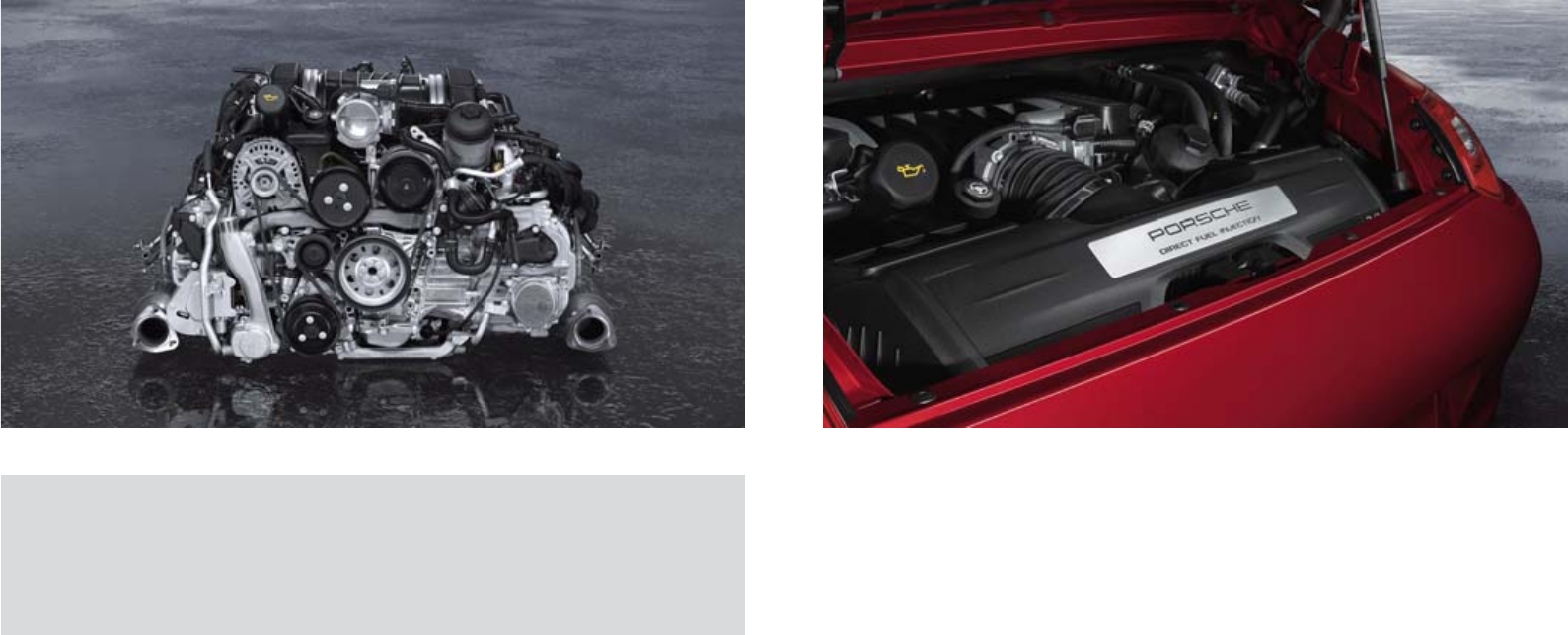
·40·
3.8-litre boxer engine
The latest 911 has a new genera-
tion of engines with direct fuel
injection (DFI), and significantly
more power. 254 kW (345 hp) is
generated by the 3.6-litre boxer
(horizontally-opposed cylinder)
engine and 283 kW (385 hp) by
the 3.8-litre power unit.
The results are outstanding
performance and surprisingly low
fuel consumption and emission
values. All made possible thanks
to DFI, VarioCam Plus, an improved
lightweight construction, reduced
friction and a number of detailed
technical solutions.
Direct fuel injection (DFI).
With millisecond precision, DFI
injects fuel at up to 120 bar directly
into the combustion chamber
by means of electromagnetically
actuated injection valves.
Why it always pays
to take the direct route.
The new engine of the 911.
·41·
The new 911 | Engine
The spray and cone angles have
been optimised for torque,
power output, fuel consumption
and emissions by enabling a
homogeneous distribution of the
air/fuel mixture, and, therefore,
effective combustion. With direct
injection, the EMS SDI 3.1 engine
control regulates injection timing
individually for each cylinder as
well as the injection rate for each
cylinder bank. This optimises
the combustion process and fuel
economy. A hot-film air mass
meter takes care of the airflow,
so that the combustion chambers
contain exactly the right mixture
at all times.
At up to 3,200 rpm, the engine
operates with dual injection;
at up to 2,500 rpm, it even works
with triple injection.The required
volume of fuel is distributed
between two or three sequential
injections, respectively – for faster
heating of the catalytic converters
after a cold start and for greater
torque in the upper load range.
DFI improves the internal cooling of
the combustion chamber by having
the mixture prepared directly in
the cylinder.This allows for a higher
compression ratio (12.5:1) which
helps to deliver more output along
with enhanced engine efficiency.
It has therefore been possible to
reduce CO
2
emissions by up
to 17%, depending on the model.
Injection is regulated by the elec-
tronic engine management system.
The exhaust gas cleaning system
ensures that emissions remain well
below even the strict limits of the
EU5 emission standard,
thus
helping to protect the environment.


















